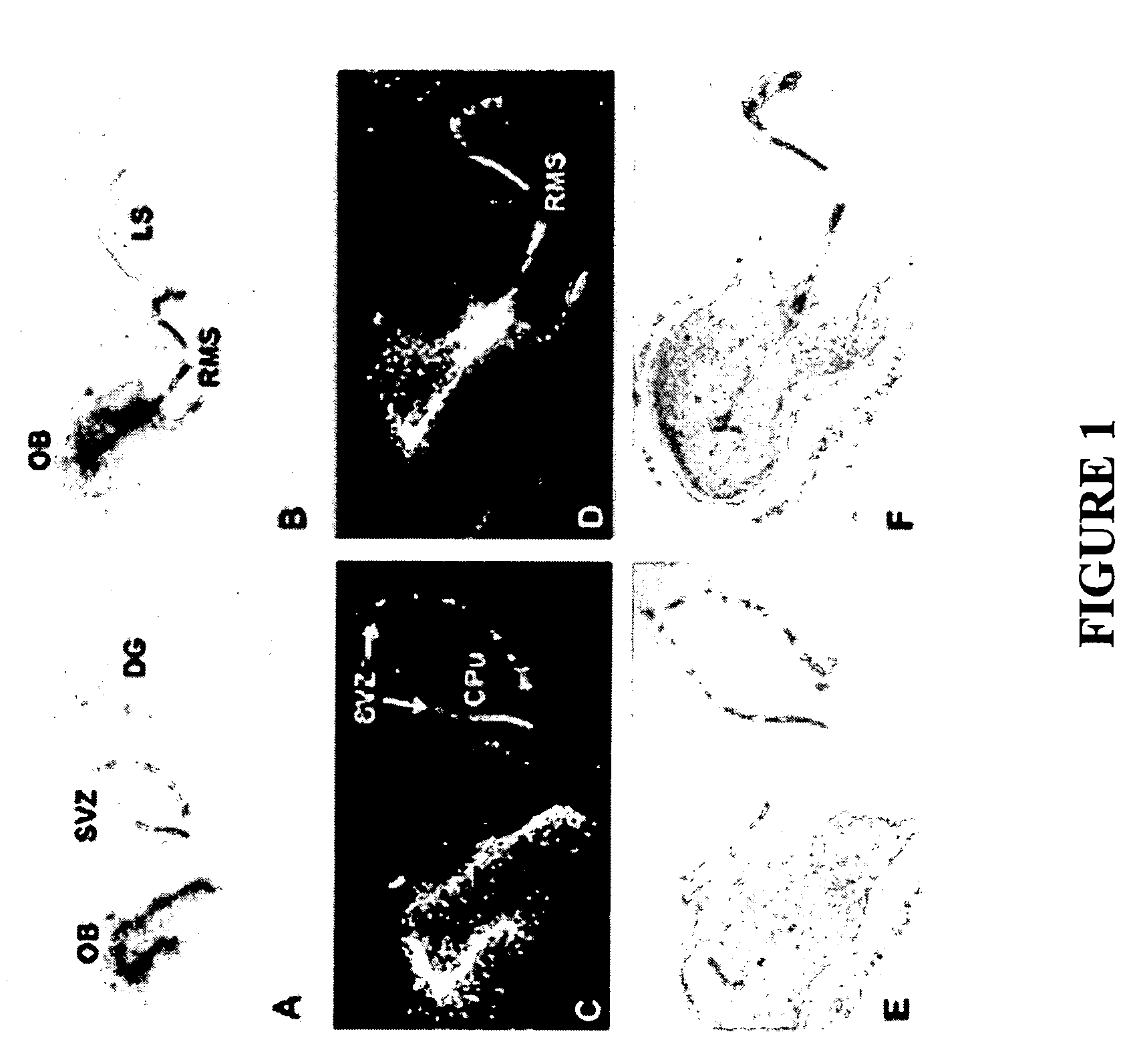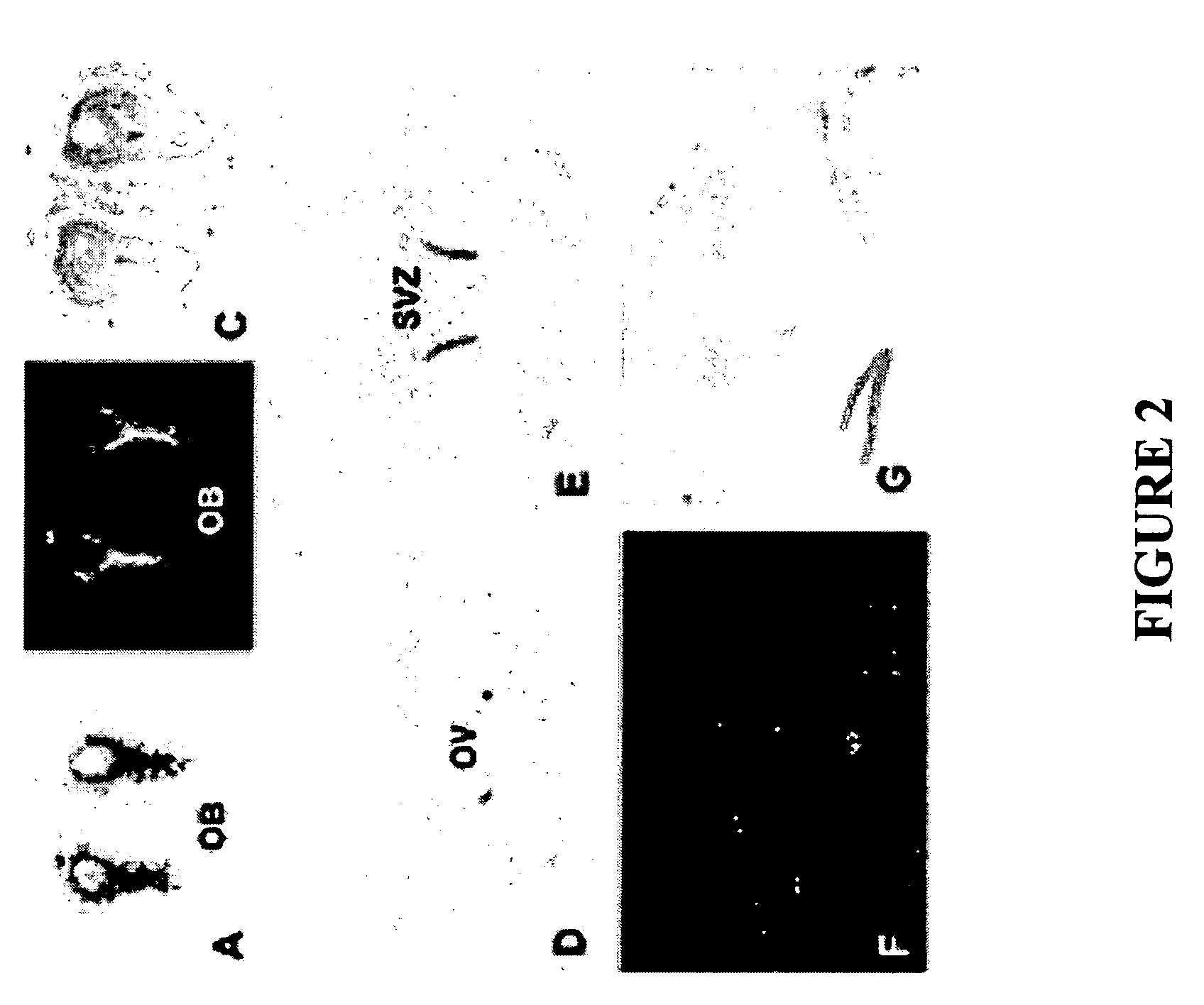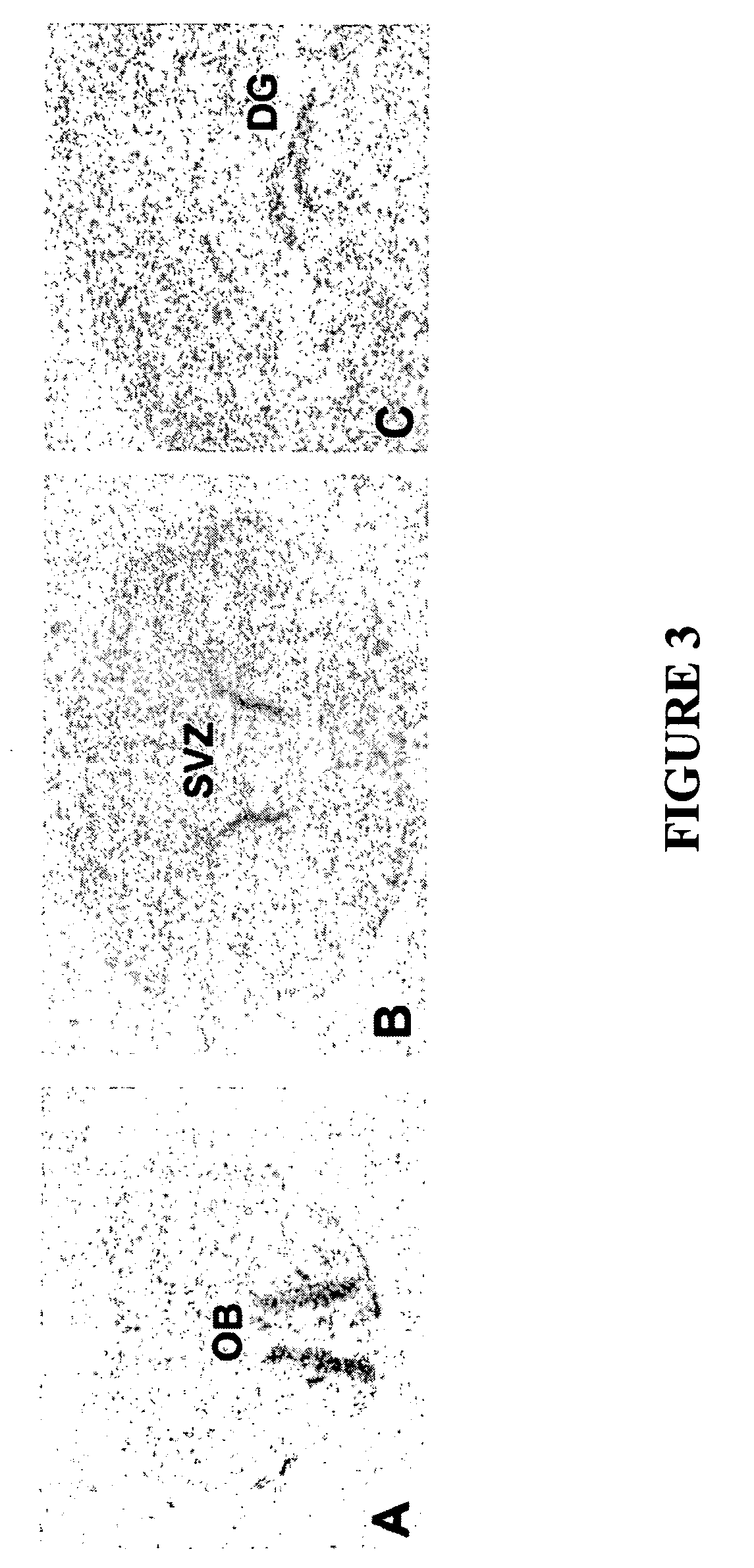Screening and therapeutic methods relating to neurogenesis
a neurogenesis and therapeutic method technology, applied in the direction of peptide/protein ingredients, depsipeptides, animal cells, etc., can solve the problems of death and disability, and the development of effective therapies for treating neural disorders is currently limited
- Summary
- Abstract
- Description
- Claims
- Application Information
AI Technical Summary
Benefits of technology
Problems solved by technology
Method used
Image
Examples
example i
[0138]This example shows the expression of prokineticin 2 (PK2), prokineticin receptor 1 (PKR1) and prokineticin receptor 2 (PKR2) in regions of the brain with high neurogenic activity.
[0139]In situ hybridization analysis of PKR1, PKR2 and PK2 mRNA expression in mouse brain was performed according to the following method. Antisense and sense riboprobes were generated containing the coding region of mouse PK2 (accession number AF487280; nucleotides 1-528) or the 3′UTR (untranslated region) of mouse PKR2 (accession number AF487279; nucleotides 1147-2211) or the 3′UTR of mouse PKR1 (accession number AF487278; nucleotides 1208-2183). The 3′UTR of PKR1 and PKR2 were used to distinguish the repsective mRNAs since these receptors are over 80% identical at the nucleic acid sequence level in their coding regions. The riboprobes were generated using T7 or SP6 RNA polymerases and were radioactively labeled with 35S-UTP. Probes were used at a concentration of 1×107 cpm / ml.
[0140]Brains from adul...
example ii
[0144]This example shows expression of PKR2 mRNA in adult retina.
[0145]Retinas of adult mice were processed for immunohistochemistry as described in Example I, using a PKR2 3′UTR riboprobe. Expression of PKR2 mRNA was observed in the retina, and particularly in the inner nuclear layer of the retina.
[0146]During retinogenesis, seven principal retinal cell types are known to derive from a common population of multipotent retinal progenitor cells (RPCs) residing in the inner layer of the optic cup (Marquardt et al., Trends Neurosci. 25:32-38 (2002). The inner nuclear layer, or layer 6, is the presumptive location of multipotent stem cells in the adult retina.
[0147]The expression of PKR2 in the inner nuclear layer of the retina is consistent with a role for PKR signaling in retinal neurogenesis. Thus, compounds that modulate prokineticin receptor signaling can be used therapeutically in applications in which it is desired to promote or inhibit neurogenesis in the retina.
example iii
[0148]This example shows a method of contacting neural stem cell or precursor cells ex vivo with prokineticins and assessing the effect on neurogenesis.
[0149]Neural stem cell cultures are established from the lateral walls of the lateral ventricles of adult mice under conditions in which they form clonal spheroid colonies, referred to as neurospheres (Reynolds and Weiss, Science 255:1707-1710 (2002)). The neural stem cells are then cultured under nine different conditions: in the presence of EGF, FGF2, PK1, PK2, EGF+PK1, FGF2+PK1, EGF+PK2, FGF+PK2, or without growth factor. The total number of neurospheres in the six different culture conditions are counted after 5 days in vitro, and the average number of neurospheres from five independent experiments are calculated. In each independent experiment, 300,000 lateral ventricle wall cells from four animals are divided between the nine different conditions. According to previous reports, no neurospheres or some very small spheres are det...
PUM
 Login to View More
Login to View More Abstract
Description
Claims
Application Information
 Login to View More
Login to View More - R&D
- Intellectual Property
- Life Sciences
- Materials
- Tech Scout
- Unparalleled Data Quality
- Higher Quality Content
- 60% Fewer Hallucinations
Browse by: Latest US Patents, China's latest patents, Technical Efficacy Thesaurus, Application Domain, Technology Topic, Popular Technical Reports.
© 2025 PatSnap. All rights reserved.Legal|Privacy policy|Modern Slavery Act Transparency Statement|Sitemap|About US| Contact US: help@patsnap.com



